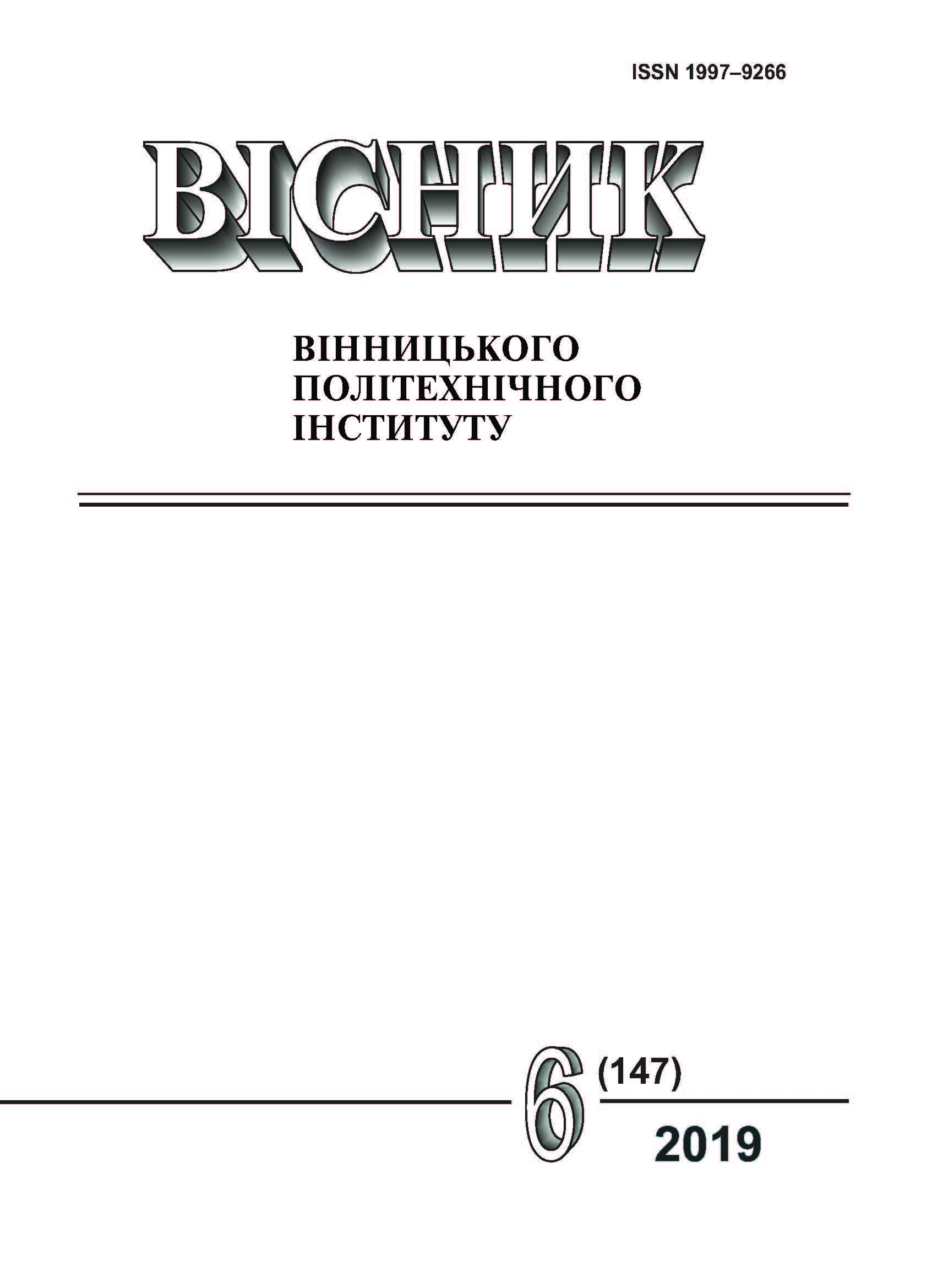Information Technology for Optimization the Personnel Potential of a Health Care Institution
DOI:
https://doi.org/10.31649/1997-9266-2019-147-6-83-90Keywords:
health care institution, performance optimization, information technologyAbstract
In the context of the reform of the health care system of the population as a component of the country’s health care system, the problem of maximizing the rational use of both existing materials and technical bases and the human resources of health care institutions is urgent. It is necessary to develop methods and tools for assessing the rational use of available resources of healthcare institutions and planning the optimization of both logistical and human resources for their effective functioning in the conditions of the market of medical services, which is formed in Ukraine. The purpose of the research is to develop information technology to optimize the functioning of the personal potential of healthcare institutions.
The medical institution is presented as a system, the main parameters of which are the indicators that characterize the employees of the institution; indicators characterizing the volume of services and the duration of their provision; employee competency matrix, which records the ability of employees to provide certain services.
When designing information technology, the solutions of the following tasks are required:
– determination of regulatory burden on employees and the institution as a whole;
– optimal distribution of services among the employees of the institution;
– optimizing the functioning of the staff of the healthcare facility.
The article builds a model for evaluating the regulatory burden on health care providers and the healthcare facility as a whole. The regulatory burden on a healthcare facility means the maximum amount of credit (minutes worked) that all its employees have within their own working hours. The model takes into account the differences between the positions and competencies of different employees.
A model for optimizing the functioning of health care staff in the form of an integer linear programming problem is constructed. The set of possible decisions is built under the condition that workers are not overloaded and all services are provided. An approach is proposed to analyze the potential of a healthcare facility, which is to consistently solve a number of optimization tasks of integer linear programming.
Experimental verification of the results was performed. The model example shows the effectiveness of developed information technology.
References
Верховна Рада України (2018). Закон «Про державні фінансові гарантії медичного обслуговування населення», Відомості Верховної Ради (ВВР), № 5, ст. 31, 2018.
МОЗ України (2016, вересень 2). Наказ № 928, «Про втрату чинності наказу Міністерства охорони здоров’я України від 23 лютого 2000 року № 33.» [Електронний ресурс]. Режим доступу: https://zakon.rada.gov.ua/rada/show/v0928282-16 .
Д. Богдан та ін., Кадрові ресурси системи охорони здоров’я в Україні. Ситуаційний аналіз. Проект USAID «Підтримка реформи охорони здоров’я». Київ, 2019.
Т. М. Носуліч, «Кадровий потенціал системи охорони здоров’я: проблеми та перспективи розвитку», Демографія та соціальна економіка, № 1, 2006.
T. Grynko, and K. Savchenko, «Науково-методичні підходи до оцінки кадрового потенціалу медичного закладу,» Scientific Notes of Ostroh Academy National University," Economics" Series, no. 7 (35), pp. 23-27, 2017.
О. П. Третьяк, «Роль менеджменту персоналу у формуванні та використанні трудового потенціалу медичних закладів,» Бізнес Інформ, № 11, с. 331-336, 2014.
O. Mulesa, F. Geche, A. Batyuk, and I. Myronyuk, “Using a system approach in the process of the assessment problem analysis of the staff capacity within the health care institution,” in Computer science and information technologies (CSIT 2018), 2018, pp. 177-180.
O. Mulesa, F. Geche, V. Nazarov, and M. Trombola, “Development of models and algorithms for estimating the potential of personnel at health care institutions,” Eastern-European Journal Of Enterprise Technologies, no. 4(2 (100)), pp. 52-59, 2019. http://dx.doi.org/10.15587/1729-4061.2019.174561 .
В. А. Гончаров, Методы оптимизации, учеб. пособие для вузов. Москва, Россия: Юрайт, 2014.
Л. Ф. Гуляницький, та О. Ю. Мулеса, Прикладні методи комбінаторної оптимізації, навч. посіб. Київ, Україна, 2016.
К. Н. Лунгу, Линейное программирование. Руководство к решению задач, учеб. пос. Москва, Россия: Физматлит, 2009.
В. Зубко, Стислий огляд методів цілочисельного програмування. Метод Гоморі. [Електронний ресурс]. Режим доступу: http://repository.sspu.sumy.ua/handle/123456789/2219. 2016.
Ю. Г. Стоян, та О. О. Ємець, Теорія і методи евклідової комбінаторної оптимізації. Київ: Інститут системних досліджень освіти, 1993, 188 с.
О. О. Ємець, та Т. О. Парфьонова, «Наближений метод для розв’язування комбінаторних транспортних задач,» Радиоэлектроника и информатика, № 2, 2006.
Downloads
-
PDF (Українська)
Downloads: 305
Published
How to Cite
Issue
Section
License
Authors who publish with this journal agree to the following terms:
- Authors retain copyright and grant the journal right of first publication.
- Authors are able to enter into separate, additional contractual arrangements for the non-exclusive distribution of the journal's published version of the work (e.g., post it to an institutional repository or publish it in a book), with an acknowledgment of its initial publication in this journal.
- Authors are permitted and encouraged to post their work online (e.g., in institutional repositories or on their website) prior to and during the submission process, as it can lead to productive exchanges, as well as earlier and greater citation of published work (See The Effect of Open Access).





